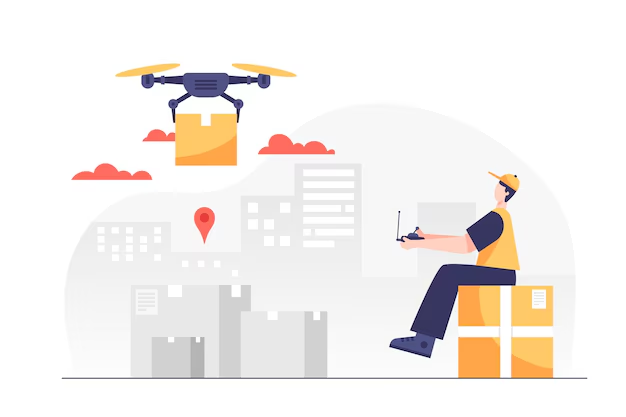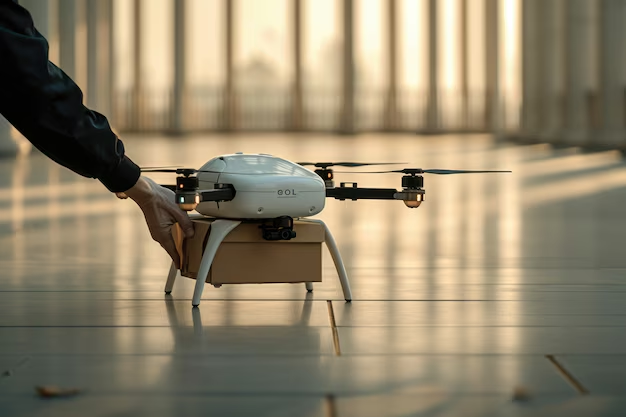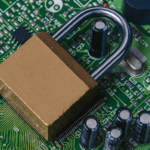Drone technology has evolved dramatically from its early beginnings into a pivotal tool across numerous sectors, including agriculture, emergency response, and infrastructure inspection.
This evolution has introduced sophisticated systems that integrate advanced flight control algorithms, communication technologies, and a range of sensors. With the growing reliance on drones, ensuring their operational safety and reliability has become paramount.
Manual testing of these complex systems often proves inadequate due to its resource-intensive nature and limitations in scalability.
Automated testing has emerged as a transformative solution, offering significant advantages in terms of efficiency and accuracy. By enabling comprehensive simulation of various scenarios and continuous testing throughout the development cycle, automated testing addresses the challenges of manual approaches.
As drone technology continues to advance, automated testing plays a crucial role in maintaining high standards of safety and performance, ultimately supporting the widespread and effective deployment of drones across different industries.

The Need for Automated Testing in Drones
Challenges in Manual Testing
Manual testing of drone systems presents several significant challenges. Traditional testing methods are often time-consuming and labor-intensive, requiring extensive hands-on work to assess various components and scenarios.
This process can be slow and may not cover all possible conditions that a drone might encounter in real-world operations.
Additionally, manual testing is inherently limited in its ability to simulate complex and dynamic environments, such as adverse weather conditions or unexpected system failures, which are crucial for ensuring a drone’s reliability and safety.
Another challenge is the scalability of manual testing. As drone technology advances and the complexity of systems increases, the volume of testing required also grows.
Manual approaches struggle to keep pace with these demands, leading to potential gaps in testing coverage and increased risk of undetected issues. This limitation underscores the need for more efficient and comprehensive testing solutions.
Advantages of Automated Testing
Automated testing addresses these challenges by providing a more efficient and scalable approach to evaluating drone systems. One of the primary benefits of automated testing is its ability to conduct extensive and repeatable tests quickly, covering a wide range of scenarios and conditions.
Automated test systems can run multiple simulations simultaneously, generating vast amounts of data that would be impractical to achieve through manual methods. This capability not only accelerates the testing process but also enhances the accuracy and thoroughness of the evaluations.
Moreover, automated testing facilitates continuous testing throughout the development cycle, integrating seamlessly with agile and iterative development processes. This continuous feedback loop allows for early detection and resolution of issues, reducing the risk of costly failures and improving overall system reliability.
By leveraging advanced technologies, such as simulation platforms and automated test scripts, developers can ensure that drones meet stringent safety and performance standards before deployment.
Overall, the adoption of automated testing in drone technology is essential for keeping pace with the rapid advancements in the field and ensuring that drones operate safely and effectively in a wide range of real-world scenarios.
Key Areas for Automated Testing in Drones
Flight Control Systems
Automated testing of flight control systems is crucial for ensuring that drones perform reliably under a variety of conditions.
This involves evaluating the algorithms that govern a drone’s flight dynamics, including its ability to maintain stability, execute precise maneuvers, and adapt to changes in the environment.
Automated testing platforms can simulate different flight scenarios, such as sudden gusts of wind, rapid changes in altitude, and complex flight paths, to assess the drone’s responsiveness and stability.
By testing these systems in a controlled environment, developers can identify potential issues and fine-tune the algorithms to enhance performance and safety.
Communication Systems
Effective communication is fundamental to drone operation, involving both the transmission of control commands from the operator and the reception of data from onboard sensors.
Automated testing tools can evaluate various aspects of communication systems, including signal strength, data integrity, and the robustness of communication protocols.
Tests can simulate interference, signal loss, and other disruptions to ensure that the drone can maintain reliable communication and data exchange even in challenging conditions. This helps to prevent issues that could lead to loss of control or data inaccuracies.
Sensor Integration
Drones rely on a variety of sensors, such as GPS, cameras, and lidar, to navigate and gather information about their environment.
Automated testing of sensor systems involves verifying the accuracy and functionality of these sensors, as well as how they work together through sensor fusion.
Tests can check the calibration of individual sensors, validate data accuracy, and assess how well the integrated system processes and interprets the combined data.
Ensuring that sensors perform correctly and that data is accurately processed is critical for the drone’s ability to make informed decisions and operate safely.
Battery and Power Management
The efficiency of a drone’s battery and power management system directly impacts its operational duration and reliability.
Automated testing can assess battery performance under various conditions, such as different levels of charge, temperature fluctuations, and varying power demands.
This includes testing the efficiency of power distribution systems and evaluating the drone’s ability to manage power consumption effectively. By simulating different flight scenarios and power requirements, developers can identify potential issues related to battery life and power management, ensuring that drones can operate effectively for their intended missions.
Each of these key areas—flight control systems, communication systems, sensor integration, and battery management—requires thorough and automated testing to ensure that drones are reliable, safe, and capable of performing their intended tasks effectively.
Automated testing not only enhances the accuracy and efficiency of these evaluations but also helps to address potential issues before they impact real-world operations.
Automated Testing Tools and Technologies
Simulation Platforms
Simulation platforms are at the forefront of automated testing for drone technology, offering a virtual environment to test and refine drone systems without the need for physical prototypes.
These platforms enable developers to create and manipulate complex flight scenarios, including various environmental conditions and potential system failures.
Tools like Gazebo, AirSim, and CoppeliaSim provide detailed simulations of drone flight dynamics, sensor interactions, and communication protocols.
By using these platforms, developers can conduct extensive testing and gather valuable data on drone performance, stability, and response to different stimuli, all while avoiding the risks and costs associated with real-world testing.
Testing Frameworks and Scripts
Automated testing frameworks and scripts play a critical role in streamlining the testing process and ensuring thorough coverage of different scenarios.
Frameworks such as Robot Framework and pytest, coupled with custom scripts, enable the automation of repetitive test tasks and the execution of complex test scenarios.
These tools can be used to automate tests for various aspects of drone systems, from flight control algorithms to sensor accuracy.
By integrating these frameworks into the development workflow, teams can achieve consistent and reliable testing results, accelerate the development cycle, and quickly identify and address potential issues.
Integration with CI/CD Pipelines
Incorporating automated testing into Continuous Integration and Continuous Deployment (CI/CD) pipelines is essential for maintaining high-quality standards throughout the development process.
By integrating automated tests into CI/CD workflows, developers can continuously validate changes and ensure that new code does not introduce regressions or new issues.
Tools like Jenkins, GitLab CI, and CircleCI facilitate this integration by automating the build, test, and deployment processes.
This approach not only accelerates the development cycle but also ensures that each iteration of the drone’s software and hardware is thoroughly tested and validated before release.
Advanced-Data Analytics
Advanced data analytics tools enhance automated testing by providing insights into the performance and behavior of drone systems.
These tools analyze the data generated during automated tests to identify patterns, trends, and potential issues.
By leveraging techniques such as machine learning and predictive analytics, developers can gain deeper insights into system performance, optimize testing processes, and anticipate future problems.
Tools like MATLAB and Python’s data analysis libraries can process large volumes of test data, enabling more informed decision-making and continuous improvement of drone technology.
Hardware-in-the-Loop (HIL) Testing
Hardware-in-the-loop (HIL) testing combines real hardware with simulated environments to evaluate the interaction between a drone’s physical components and its control systems.
This approach involves connecting actual drone hardware to simulation platforms, allowing for the assessment of how real-world components perform under simulated conditions.
HIL testing is particularly useful for validating the performance of flight control systems, sensors, and communication modules in a realistic yet controlled setting. By incorporating HIL testing, developers can bridge the gap between simulation and real-world operation, ensuring that the drone performs as expected when deployed.
Together, these tools and technologies form a comprehensive ecosystem for automated testing in drone technology. By leveraging simulation platforms, testing frameworks, CI/CD integration, advanced data analytics, and HIL testing, developers can ensure that drones are thoroughly evaluated and optimized for safe and reliable operation across a range of applications.
Conclusion
Automated testing is indispensable in the advancement of drone technology, offering critical advantages in efficiency, accuracy, and scalability.
By leveraging sophisticated simulation platforms, comprehensive testing frameworks, and integration with CI/CD pipelines, developers can thoroughly evaluate drone systems across diverse scenarios and conditions.
This approach not only accelerates the development process but also enhances the reliability and safety of drones, ensuring they meet rigorous performance standards before deployment.
As drone technology continues to evolve, automated testing will play an increasingly vital role in addressing emerging challenges and opportunities.
Embracing these advanced testing tools and methodologies will enable developers to maintain high-quality standards, reduce the risk of failures, and support the safe and effective deployment of drones in various industries.
The ongoing advancements in automated testing will drive innovation and ensure that drones continue to operate reliably in an ever-expanding range of applications.












